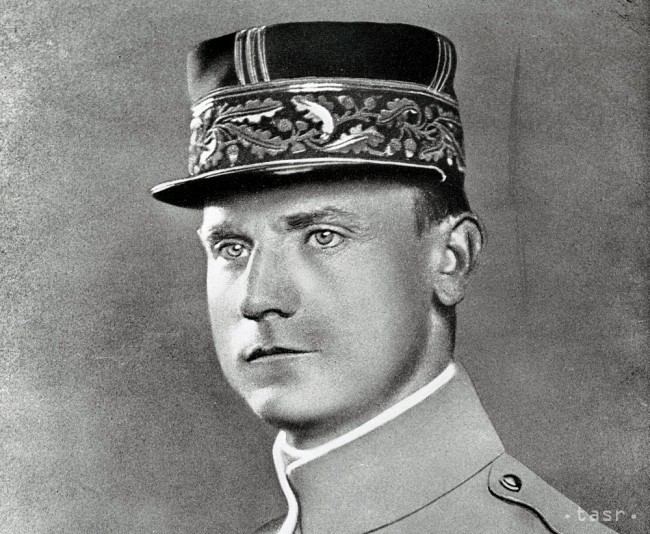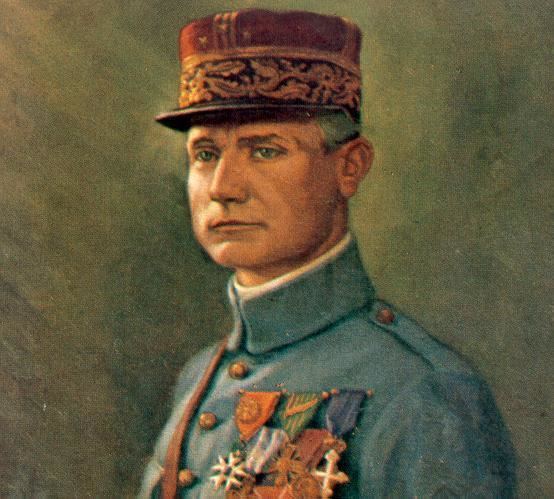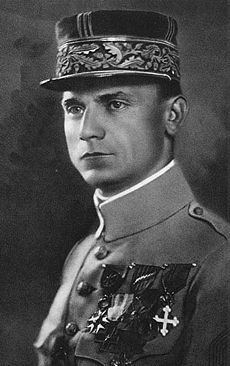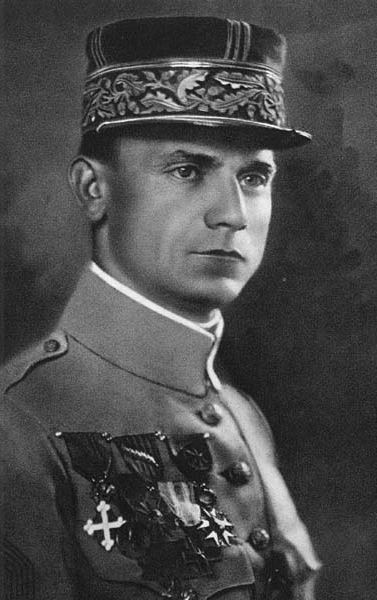Religion Lutheran Role Politician Resting place Brezova pod Bradlom | Name Milan Stefanik Awards Legion of Honour | |
 | ||
Born July 21, 1880
Kosariska, Kingdom of Hungary ( 1880-07-21 ) Occupation Military, Astronomer, Mathematician, Pilot, Meteorologist Died May 4, 1919, Ivanka pri Dunaji, Slovakia Education Charles University in Prague (1900–1904) Parents Pavol Stefanik, Albertina Jurenkova | ||
Mohyla gen milana rastislava tef nika monument of general milan rastislav stefanik
Milan Rastislav Stefanik ([ˈmilan ˈrascislaw ˈʃcefaːnik]; July 21, 1880 in Kosariska, Austria-Hungary – May 4, 1919 in Ivanka pri Dunaji, Czechoslovakia) was a Slovak politician, diplomat, and astronomer. During World War I, he served as a General in the French Army and, at the same time, as the Minister of War for Czechoslovakia. As one of the leading members of the Czechoslovak National Council (i.e. resistance government), he contributed decisively to the cause of Czechoslovak sovereignty, since the status of Czech- and Slovak-populated territories, among others, was in question until shortly before the disintegration of the Austro-Hungarian Empire in 1918.
Contents
- Mohyla gen milana rastislava tef nika monument of general milan rastislav stefanik
- Studies
- France Tahiti and other countries
- World War I and struggle for independence
- Death
- References

Stefanik's personal motto was: To Believe, To Love, and To Work (Verit, milovat, pracovat).
Studies

Stefanik was born in Kosariska, Austria-Hungary (now Slovakia), on July 21, 1880. He had 12 brothers and sisters, two of whom died at a young age. His father, Pavol Stefanik, was a local Lutheran pastor, and his mother's name was Albertina Jurenkova. As a strong Slovak patriot, he had problems at Hungarian schools (Slovak schools were prohibited due to active Magyarization), and he had to change high schools several times (Pressburg, Sopron, Szarvas).

In 1898, he began studying construction engineering in Prague. In 1900, he transferred his studies to Charles University, where he attended lectures in astronomy, physics, optics, mathematics, and philosophy. For the 1902 summer semester, he was at university in Zurich. The Prague years had a great impact on Stefanik because he met many important personalities there. The philosophy lectures were given by Tomas Garrigue Masaryk (the future first president of Czechoslovakia), who inspired Stefanik with the idea of cooperation between the Czechs and the Slovaks. Furthermore, Stefanik very actively participated in the work of the Slovak student association Detvan (and within Detvan, the so-called Hlasists group), where he became acquainted with Vavro Srobar. His studies were largely financed by Czech associations including Ceskoslovanska jednota (Czechoslavic Unity) and Radhost, since he himself could not afford them. In Prague, he wrote political and artistic texts in which he tried to inform the Czechs of the disastrous situation of the Slovaks at that time. He graduated in 1904 with a doctorate in philosophy, and with thorough knowledge of astronomy (he finished his studies with a thesis in astronomy). He wrote his thesis about a star which was discovered in the Cassiopeia constellation in 1572.
France, Tahiti and other countries

In 1904, he went to Paris to find a job in astronomy with a recommendation from a Czech professor who was known in Paris. Initially, he had no money and no command of French, but was nevertheless able to obtain a job at the famous Observatoire de Paris-Meudon, whose director, Pierre Janssen (one of the co-founders of astrophysics), saw Stefanik’s talent. Stefanik owed to Janssen and Camille Flammarion his social, political and scientific career. The observatory was the most important centre for astronomy at the time, which meant he gained a huge amount of prestige from the job.

Between 20 June and 4 July in 1905, Stefanik climbed Mont Blanc (later he climbed it several times) in order to observe the Moon and Mars. Then he took part in an official French expedition which observed and recorded a full eclipse of the Sun in Alcossebre, in Spain. Thereby, he established his own reputation in the French scientific society. He worked with Gaston Millochau, who was a member of the Academie Francaise, so some of its members read his work. -His studies and the results of his observations were published in reports to the Academie Francaise and he received several awards for them - Later, he was invited to an international astronomer conference in Oxford which was interested in solar research. Between 1906 and 1908, he was co-director of the Mont Blanc observatories company.

At the end of 1907, however, Pierre Janssen died and Stefanik lost his job. Since 1908, he had been charged by the French authorities with astronomical and meteorological observations, (mainly observations of solar eclipses) and political tasks in various countries all over the world including (Algeria, Morocco, Turkistan, Russia, India, the USA, Panama, Brazil, Ecuador, Australia, New Zealand, Tahiti, Fiji, and Tonga). In Tahiti, he also built an observatory and a network of meteorological stations (rumor has it that he spent much of his time in the Pacific spying on German positions). Between these voyages, he regularly returned home to Kosariska (the last time in 1913 for his father’s funeral). While in South America (especially in the Galapagos Islands in Ecuador), he had an opportunity to show his diplomatic skills for the first time.
Stefanik worked in astrophysics and solar physics, and became well known for his spectral analysis of the sun's corona. He was involved in perfecting spectrography and has been considered a predecessor of Bernard Lyot. He also attempted to construct a machine for color photography and cinematography, and had his design patented in 1911.
In addition to his scientific missions overseas, he also performed diplomatic tasks. He established contacts and friendships with leading scientific, artistic, political, diplomatic and business personalities. He participated in the establishment of business enterprises in France and other countries. His friends included physicist Henri Poincare, count Eugene Aymar de la Baume, Joseph Vallot (who was the richest man in France), architect Gustave Eiffel, prince Roland Bonaparte, Prime-Minister Camille Chautemps, a French entrepreneur called Devousoud from Chamonix, American astronomer and admiral Simon Newcomb, and American diplomat David Jayne Hill. In 1912, he received French citizenship, recognition, and access to the French elite. On October 20, 1917, he was made a Grand Officier of the Legion of Honour. At the same time, he had some personal problems and a serious stomach illness (which did not get better even after surgery). Moreover, World War I started in Europe.
World War I and struggle for independence
Stefanik believed that the defeat of Austria-Hungary and Imperial Germany after the First World War would offer an opportunity for the Slovaks and Czechs to gain independence from Austria-Hungary. Therefore, he enlisted in the French army and trained to become an aviator. He flew MFS-54s for the 10th Army on the Artois and was later transferred to MFS 99 Squadron on the Serbian Front. In May, 1915 he flew a total of 30 missions over enemy territory. The Serbian campaign was unsuccessful, but French aviator Louis Paulhan is credited with the world's first "medevac" when he flew the seriously ill Milan Stefanik to safety.
He returned to Paris at the end of 1915, where he became acquainted with Edvard Benes and renewed his association with his former professor, Tomas Masaryk. In 1916, these three men founded the Czechoslovak National Council (the government of Czecho-Slovak resistance abroad, leading to the creation of Czechoslovakia in 1918). After 1917, he became vice president of the council. Thanks to his diplomatic skills, Stefanik was able to help Masaryk and Benes to meet, and obtain the support of, some of the most important personalities of the Triple Entente. For example, he organized Masaryk’s meeting with the French prime minister, Aristide Briand.
In 1916, Stefanik and the Czecho-Slovak resistance started to organize Czechoslovak troops (legions) that would fight against Austria-Hungary and Germany. For this purpose, Stefanik (as the Czechoslovak Minister of War and as a French General) went to Russia in February 1917, and then to the USA. He also organized legions in France and Italy. It was largely due to his personal diplomatic skills and contacts that the Allies (Entente) recognized the Czechoslovak National Council as a de facto government and the Czechoslovak troops as allied forces in the summer and autumn of 1918. In May 1918, Stefanik went to Russian Siberia, where he sought to rally the Czechoslovak legions to a renewal of the Eastern Front, as Bolshevik Russia had withdrawn from the war by signing the Treaty of Brest-Litovsk with Germany and Austria-Hungary in March 1918. The Czechoslovak legions rebelled against a subsequent Bolshevik order to disarm, thus gaining the support of the Allies. Due to these events, Stefanik decided that his initial plan was no longer feasible.
In January 1919, when the war ended, Stefanik went from Russia to France and Italy, where he organized the retreat of Czechoslovak troops from Siberia to Paris in March. In addition, his diplomatic skills were needed in order to solve disagreements between the French and Italian missions in Czechoslovakia. In April, he went from Paris to Rome to negotiate at the Italian Ministry of War, where he also met with his fiancee Juliana Benzoni for the last time. Then he went to the main Italian military base in Padua, where he agreed with General Armando Diaz on the dissolution of the Italian military mission in Czechoslovakia.
Sources do not substantiate rumors of disagreements arising between Stefanik and Benes or Masaryk, mainly regarding the position of Slovakia within Czechoslovakia. On the contrary, telegrams sent by Stefanik from Vladivostok to the Czechoslovak National Council in Paris on 7 December 1918 indicate that Stefanik had a good relationship with them. To Masaryk, he wrote, "with my filial feelings and a great patriotic happiness, I salute you, venerable professor, as the first president of the Czechoslovak Republic." To prime-minister Kramar, he wrote, "Thank you, my dear president (of the council), for having chosen me as member of our National Ministry. You and your other co-workers can be sure of my loyalty and my fraternal feelings." To Edvard Benes, he was even more friendly, addressing him with informal grammar (in French, "tu"), while he addressed Masaryk and Kramar with the respectful formal second person pronoun (in French, "vous"). "Mr. Benes, Ministry of Foreign Affairs in Prague: je t'embrasse afectueusement (I hug you with affection), my loyal and precious companion during the hours of anxiety." In French, the verb "embrasser" means either a very friendly hug to a close friend, or even the French kiss on the cheek among very close male friends. These telegrams appear to show that Stefanik had given his full support to the union of the Czechs and Slovaks into a Czechoslovak republic led by Masaryk. Masaryk, for his part, continued to accord Stefanik his full confidence to the last days of his life, as demonstrated by the challenging issue Stefanik had to solve while Minister of War of the Czechoslovak Republic - disputes among the military missions of France and Italy on the territory of Czechoslovakia, according to his telegram to Masaryk on 21 April 1919 - only a few days before Stefanik's death on the 5th of May, 1919.
Death
Finally, Stefanik wanted to return home to see his family. He decided to fly from Campoformido near Udine, Italy, and to use an Italian military plane, a Caproni Ca.3. On May 4, 1919 around 11am, his plane tried to land near Bratislava (which was a military conflict area between the First Republic of Czechoslovakia and the Hungarian Soviet Republic at the time), but crashed near Ivanka pri Dunaji. Stefanik died, along with the rest of the crew - two Italian pilots: colonel Giotto Mancinelli Scotti and sergeant Umberto Merlino, and a mechanic-radiotelegrapher Gabriel Aggiusto. The reason for the plane crash is disputed. The official explanation at the time was that the airplane crashed due to bad weather, which was not true as at the time of the disaster it was sunny with only mild wind. However, it is notable to mention that official and thorough investigation was not performed until 1926 - 1928, more than 7 years after the death of the whole crew. At the time of the crash, Srobar and his entire government had left Bratislava for Skalica to plant trees as a memorial to the founding of the new Czechoslovak Republic. It is deliberate and obvious that his plane was actually not shot down by Hungarian communists standing in the middle of Bratislava's Franz Joseph bridge. Although rumor at the time purported that the Italian plane's identifying colors were mistaken for the similar marking of a Hungarian plane, and as such, the unannounced, unknown airplane was shot down by the Czechoslovak army. However, the respected Zrinyi Miklos National Defense University in Budapest, in a joint article with the Armed Forces Academy of General Milan Rastislav Stefanik in Slovakia, published a paper citing the Italian eyewitness first lieutenant Martinelli-Scotti as saying "in the course of the first landing attempt, the wheels touched the landing path, after which the cooling water immediately started leaking. That caused the overheating of the engines. During the second landing attempt, one of the engines exploded, resulting in catastrophe." The paper also states that the accident report from the Italian inquiry board was biased toward trying to rule out human error by the Italian crew, as well as any manufacturing defects - probably because it would affect the reputation (and sales) of the Italian airplane builder. The Italian board's lack of transparency would have contributed to the several rumours and unverified versions of Stefanik’s death. Unfortunately, Stefanik’s sudden death contributed to Slovak suspicion of the Czechs during the existence of the First Republic of Czechoslovakia. There is anyway many other theories, but obviously the communist era couldn't accept his influence and considering ALSO hatery from nearby countries and leaders and their plan to get rid of someone like him ONLY leave the accident more accurate for purposely wring *set-up* inside airplane... Stefanik's tomb was built in 1927-28 on Bradlo Hill in Brezova pod Bradlom. The monumental, yet austere, memorial was designed by Dusan Jurkovic.
